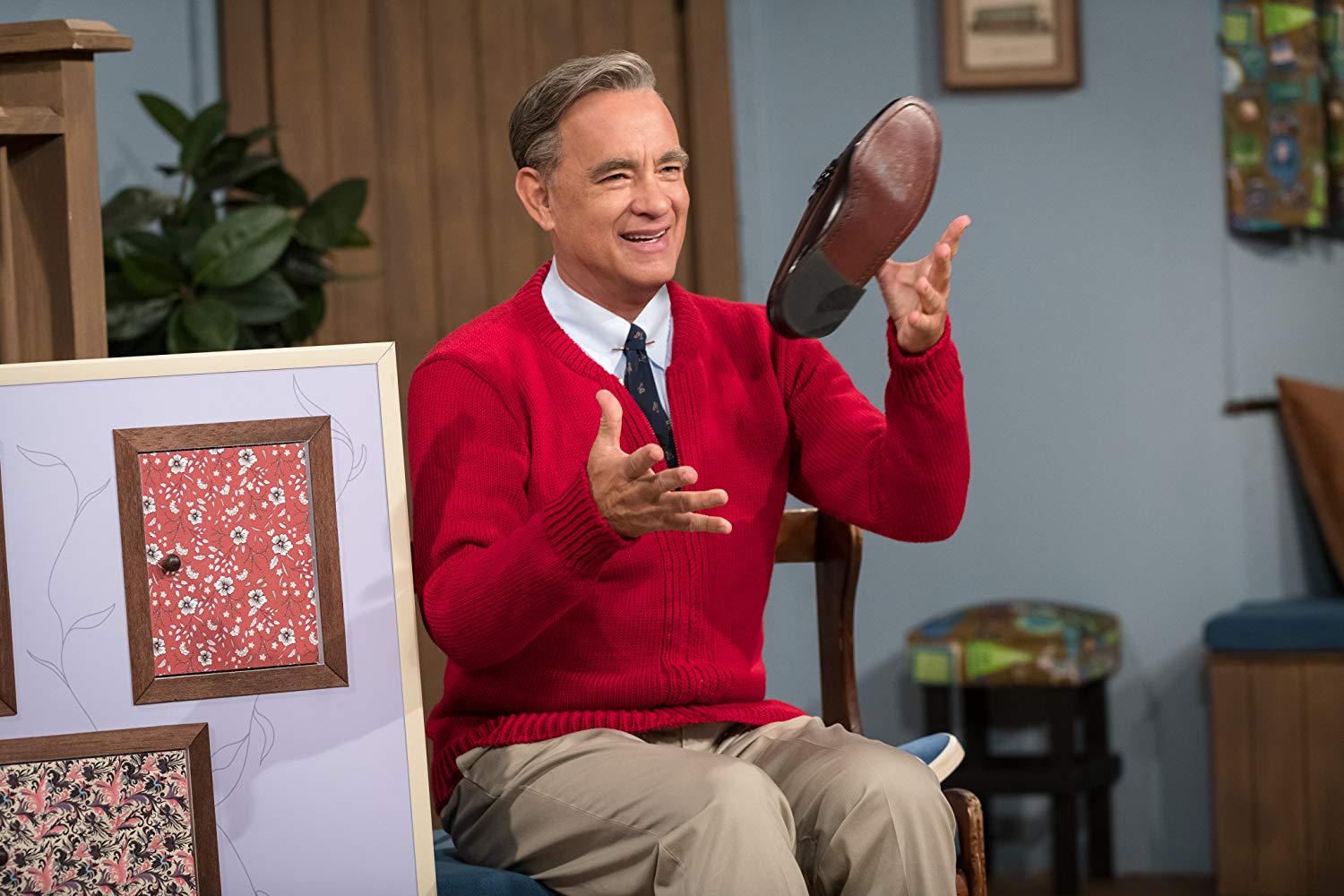No Time Like the Present for Mr. Rogers’ Radical Kindness
The TV icon’s enduring appeal, and his ability to serve as an anti-venom to Trumpism, get a worthy boost with Tom Hanks in the red cardigan. Crusader in a cardigan: Tom Hanks gets suited up as Fred Rogers in "A Beautiful Day in the Neighborhood." (IMDb)
Crusader in a cardigan: Tom Hanks gets suited up as Fred Rogers in "A Beautiful Day in the Neighborhood." (IMDb)
Who would have figured Fred Rogers for the most effective, fast-acting corrective to the toxic Trump years?
Last year there was Morgan Neville’s documentary “Won’t You Be My Neighbor?” and Maxwell King’s bestseller, “The Good Neighbor: The Life and Work of Mr. Rogers.”
This week, there is Marielle Heller’s “A Beautiful Day in the Neighborhood,” framed like an episode of the educator’s PBS show, yet aimed at adults. Mr. Rogers (Tom Hanks) is both the narrator and costar. The episode’s theme is forgiveness. “Forgive,” Mr. Rogers says. “The decision we make to release a person of our anger for him.”
Understand that this is not a Rogers biography. It is a parable of friendship, however unlikely, that grows between the gentle, trusting TV host and a cynical, suspicious journalist, Tom Junod, here named Lloyd Vogel. (Here is Junod’s 1998 Esquire article, which inspired the film.)
Hanks, quiet and earnest, wears the red cardigan—and it suits him. He deflects Lloyd’s confrontational questions with a beatific smile. Still, Lloyd (Matthew Rhys of “The Americans”) escalates his queries. When Rogers turns the tables to ask Lloyd questions about himself, the journalist is confused, like a child who thinks he’s wielding a real sword before recognizing that it’s an inflatable one. And—sssssssss—it’s losing air.
In time, Lloyd will learn that you don’t bring a sword to a nice fight. And that he would be a happier, more productive, man, spouse and father if he could release his own father (Chris Cooper) from his anger jail.
Heller, director of “Diary of a Teenage Girl” and “Can You Ever Forgive Me?”, is no stranger to Lloyd’s bitterness and self-involvement. This is her third movie to feature world-class narcissists. In the spirit of Mr. Rogers, an ordained Presbyterian minister who chose children as his ministry, she is infinitely forgiving.
Heller uses whimsy the way Fred Rogers used his smile: to get to the essentials, to bring things to a human, graspable scale. The film’s transitions from Manhattan, where Lloyd lives, and Pittsburgh, where Fred lives, are made out of small-scale modeling clay representations of the two cities, resembling something one might encounter on the set of “Mr. Rogers’ Neighborhood.” At first, I thought they were cutesy. But because they made me smile, they had the effect of reducing stress hormones in my system, like seeing a waggy-tailed puppy. Before long, I realized the transitions were soothing me in the way that Fred was soothing Lloyd.
“A Beautiful Day in the Neighborhood” is about the small encounters that lead to human change. Mostly it’s about listening and making others feel heard. The acting, blessedly, is life-size.
The intelligent script from Noah Harpster and Micah Fitzerman-Blue is not a portrait of Fred Rogers, but that of his process, involving mindfulness and affirmation.
Several times during the film, and especially at its conclusion, I thought of Maya Angelou’s observation, “At the end of the day people won’t remember what you said or did, they will remember how you made them feel.”
I can report that “A Beautiful Day in the Neighborhood” took me to a place I haven’t been lately, in America or at the movies. It made me feel centered, optimistic and peaceful. It was a beautiful night at the multiplex.
Your support is crucial...As we navigate an uncertain 2025, with a new administration questioning press freedoms, the risks are clear: our ability to report freely is under threat.
Your tax-deductible donation enables us to dig deeper, delivering fearless investigative reporting and analysis that exposes the reality beneath the headlines — without compromise.
Now is the time to take action. Stand with our courageous journalists. Donate today to protect a free press, uphold democracy and uncover the stories that need to be told.






You need to be a supporter to comment.
There are currently no responses to this article.
Be the first to respond.